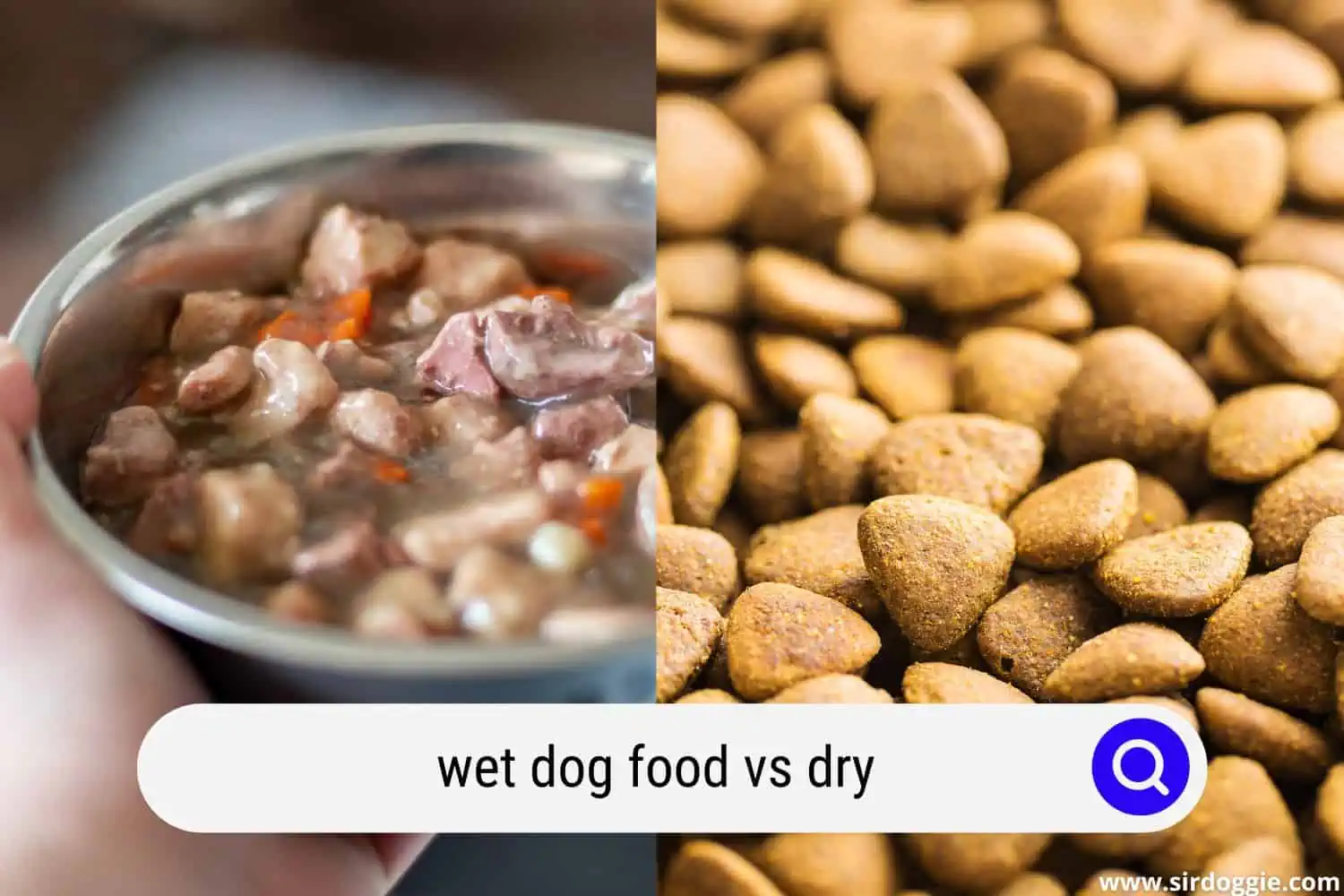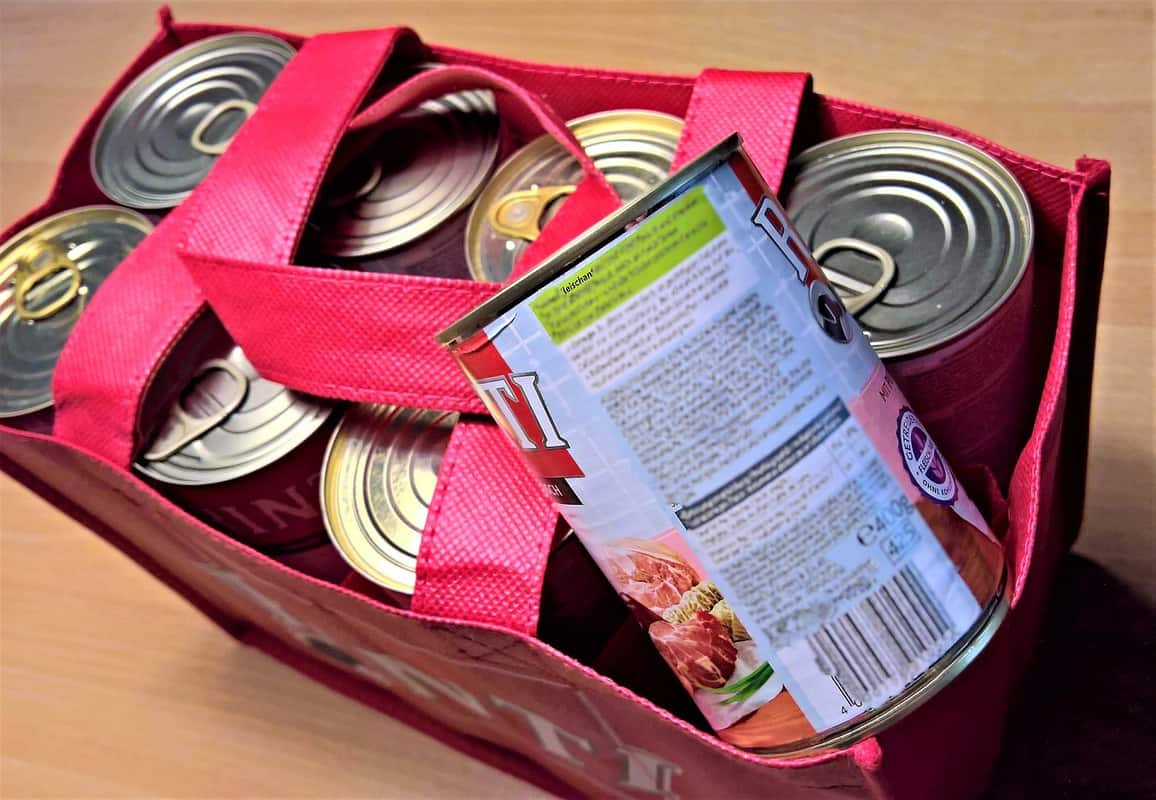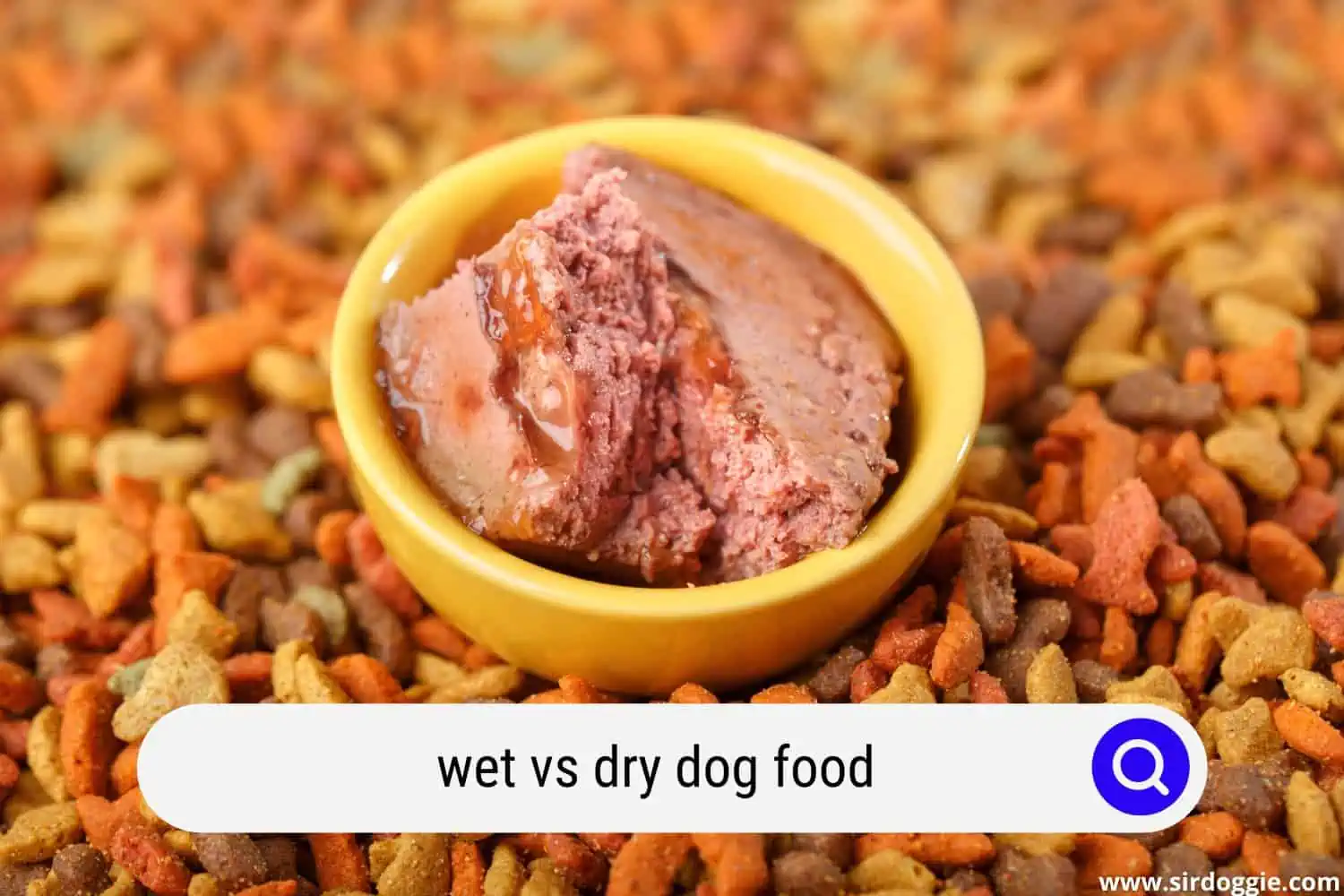Wet Dog Food vs Dry, Which One is Better?
Which is better, wet dog food or dry? Hands down, wet dog food is almost always going to be higher quality and more appealing to your dog’s taste. Dry food tends to be cut with either lower-quality ingredients or ones that are nothing more than dry fillers, whereas wet food does not usually have these types of lower-quality ingredients.

Being a pet parent for a dog can be a wonderful thing. Whether you are adding a new puppy into your home or adopting an older doggie from a rescue, opening your home to a new dog can be an exciting experience.
Like human babies, dogs need their own special food, too, and knowing what is best and what is best for your budget are some of the biggest questions for pet parents.
But knowing what kind of food to get can be overwhelming for the first-time doggie pet parent.
Think about it for yourself. Would you prefer a nice medium-rare steak fresh off the grill or dried beef jerky? Well, maybe this is a bit extreme, but you get the point.
Wet dog food is going to be both more appealing to your dog’s sense of smell and taste. But if we can agree that wet dog food is almost always better, why do the stores sell dry so much?
Well, the issue is price.
Dry dog food will almost always be cheaper in the long run.
Most pet parents, however, can’t afford the “best of the best”, and they shouldn’t feel bad about this.
Whether it’s wet or dry, commercial dog foods are highly regulated and have undergone rigorous testing by veterinary specialists.

Related Reading: What Should I Mix With Dry Dog Food?
Advantages of Wet Dog Food for Your Doggie
There are a number of reasons that wet dog food is better for dogs and preferred by dogs. Even getting dry food wet can’t make it as appealing to a dog as canned wet food is.
Though not all wet food comes in cans, the ones that do are just as shelf-stable, if not more so, than dry food is. There are also a few other reasons to use wet food rather than dry.
Canned Dog Food is Shelf Stable
Just like canned corn or tomatoes, canned dog food can actually last a few years on a shelf, which makes it more pantry or shelf-stable than bagged dog food.
An open can won’t last on the shelf like an open bag of dog food will, so you should be sure to use the full can within a 24-hour period to avoid waste. And best practice is to not leave the remaining food in the can after opening (consider using a regular container to scoop it out into).
If you want to be prepared in case of an emergency, keeping wet dog food in the pantry is a good way to make sure your doggies don’t run out of food during a time of need.
If you are keeping a couple of months worth of human food in your home for emergency situations, then you should also keep a couple of months of dog food. Rotate the supply just as you would for human food.
Dry food will not survive as well as canned wet food will, and this can be a huge advantage.
Even putting bags of food into plastic containers may not survive if you experience periods of high humidity, so cans are the best option to make sure that your canine companions can make it through the hard times with you (fingers crossed this never happens of course).
Pest Proof
If you have ever dealt with any type of pests, whether they are ants, roaches or rodents, you know that pantry food is not very safe from them. This can hold true to food left out for your pets as well.
Bags, however, tend to be a special target of pests because it is not disturbed very often, maybe a few times a day, which makes it the perfect target to feed a pest.
Wet food tends to be eaten rather quickly. Most dogs will not leave the smallest bite to sit uneaten in their bowl. This helps to reduce the risks of pests going after their food dishes.
Pet parents in Texas know all about fire ants and how they will defend a dog food dish against dogs, preventing them from being able to eat without getting stung, which can be a big issue when it comes to your doggie’s well-being.
Better Quality
Wet food, which usually comes in cans, is usually made from higher-quality ingredients. There have been some concerns when it comes to soy and pets, but most wet dog food is made without soy.
Quite often, it is actually easier to find wet food that is made with little to no grains included, so if you have a pet that has a wheat or corn sensitivity, it is easier to find food they can eat.
If you have a pregnant or nursing dog, it is better for them to be eating wet food to make sure they are getting the higher calories and nutrients that they need.
Wet food is also better for puppies since they are less likely to choke on it while they are enthusiastically trying to fill hungry tummies. This can be an issue with larger litter.
Wet Dog Food Has Better Ingredients
Many wet dog foods are made with primarily meat and veggies, which dogs love. Because of the fact that the ingredients are not as processed as they are in dry food, they do need to be of higher quality in wet food.
Wet food, even lower quality or cheaper wet food, often has a higher percentage of protein from meat in it than dry food.
Dry food or kibble tends to get most of the protein from highly processed plant-based sources.
Tastes Better (to Dogs)
I have seen very few dogs that prefer dry food over wet food. I have, however, seen dogs fight or argue over wet food even if they are all given the same amount in different dishes.
This just goes to show that wet food is more appealing to them (well, at least those doggies!).
A dog that is reluctant to eat dry food may scarf down wet food, and you can heat it up for a few seconds in the microwave (stirring after heating to eliminate hot spots) to increase the aroma and make it even more appetizing to them.

Disadvantages to Wet Food
If wet dog food was the perfect food on the market, there would be no need for dry dog food to exist, so I do want to point out that there are some downsides to wet food.
Wet Dog Food is Most Expensive
There is a significant cost difference between wet and dry, and for some, this may be the deciding factor (and that’s ok!).
The bigger your dog, the more you need to buy. An adult German Shepard may go through 2 – 3 cans of wet food a day or 2 – 3 cups of dry food. This can make a huge difference in cost since you are talking about nearly twice the price for wet food.
Whether you are on a budget or taking in rescues, that cost difference can make the difference between taking in a dog or not.
Wet Dog Food Produces More Waste
For those concerned about our environment and who are not able to recycle as much as they would like, there can be an issue with waste from wet food.
20 lbs of wet food will fill a garbage bag or more of empty cans, while 20 lbs of dry food is nothing more than a single bag that can fold up.
There is a lot of trash that is produced by feeding wet dog food compared to feeding dry, but hopefully, you recycle!
Wet food takes up more space because it is wet, meaning that the liquid is removed from dry food, so it takes up less room. The moisture content in wet food does take up more space, and it is not as condensed or dense as dry food.
Most pet parents, however, can’t afford the “best of the best”, and they shouldn’t feel bad about this. Whether it’s wet or dry, commercial dog foods are highly regulated and have undergone rigorous testing by veterinary specialists.
Conclusion
Whenever switching to a new food it’s important to follow both the food’s recommended transitioning protocol and any suggestions from your veterinarian.
Here’s a great quote from Dr. Lisa M. Freeman, DVM, Ph.D., DACVN, who is a veterinary nutritionist and a professor at Cummings School of Veterinary Medicine at Tufts University.
She is on the cutting edge of science, with hundreds of articles in prestigious journals, speaking engagements at national and international conferences, and awards for her scientific achievements.
Pets require nutrients, not ingredients; a diet full of great sounding ingredients can be less nutritious than a diet containing less appealing (to people) ingredients. Some manufacturers may add ingredients to diets solely for marketing purposes, to increase the appeal of the diet to consumers. These ingredients may have unproven benefits, be present in minuscule amounts and provide nothing to the diet but added expense

Family Dog Expert Author
Hi there! I’m Stuart, a devoted dog lover and family dog expert with over a decade of experience working with our furry companions. My passion for dogs drives me to share my knowledge and expertise, helping families build strong, loving bonds with their four-legged friends. When I’m not writing for SirDoggie, you’ll find me hiking, playing with my beautiful dog, or studying music.